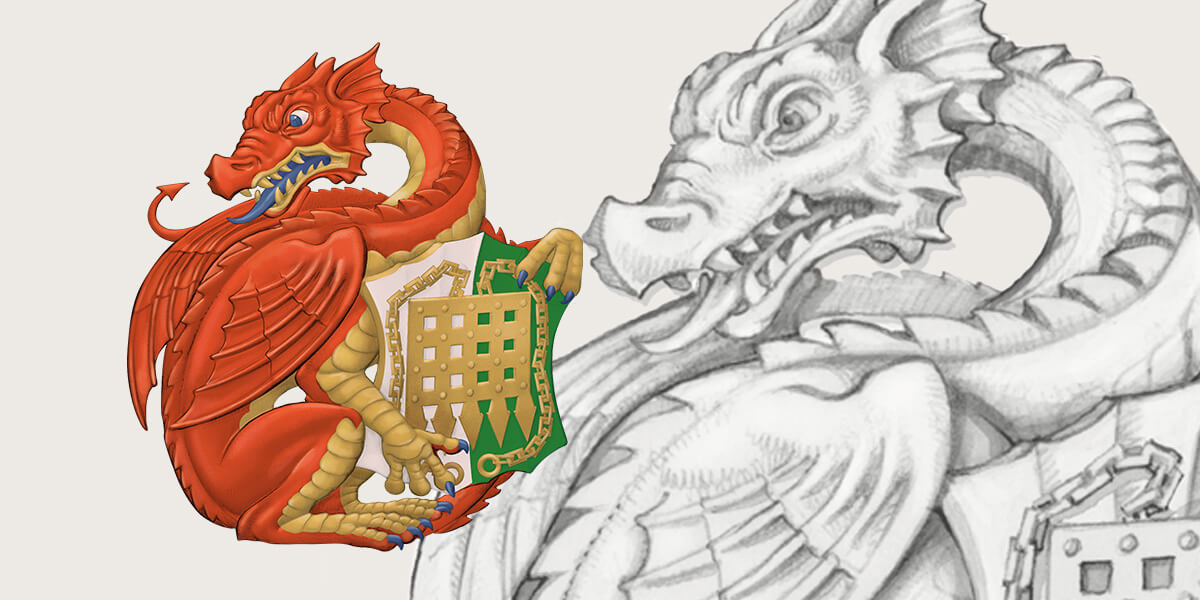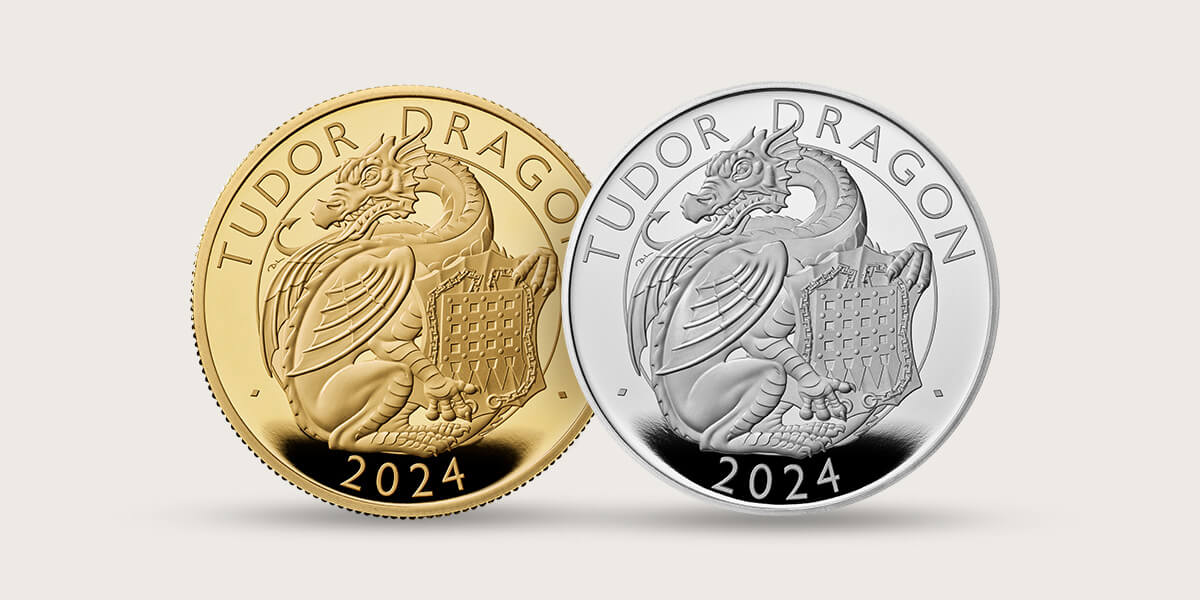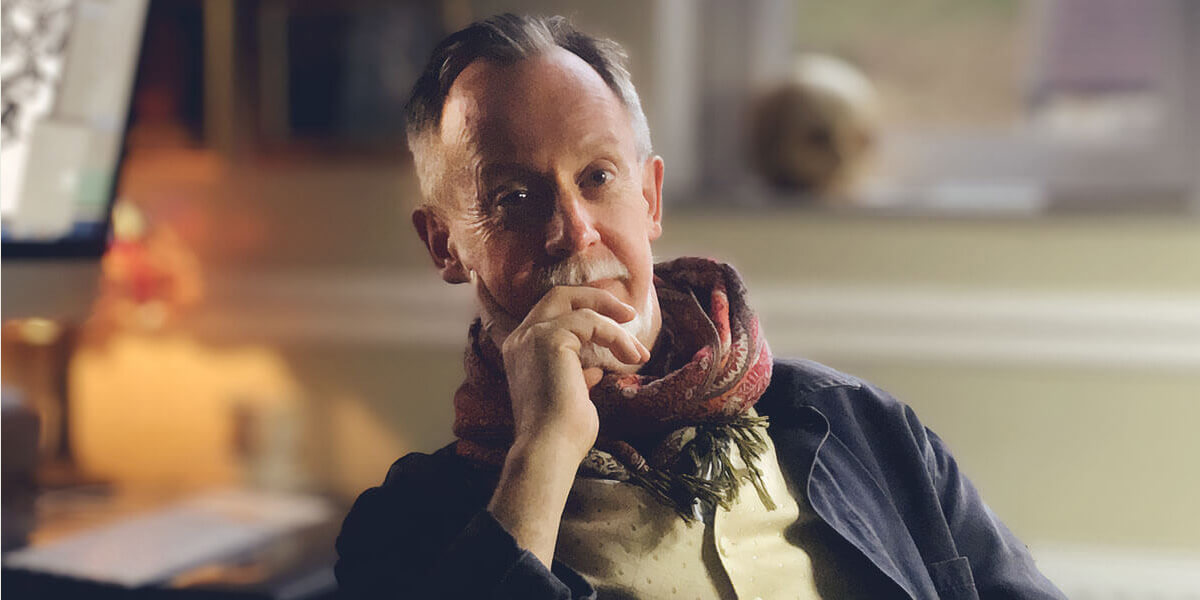Stepping through the annals of history, ten mighty beasts stand resolute upon the Moat Bridge at Hampton Court Palace. Commissioned by Henry VIII, these heraldic creatures served as majestic emissaries of the House of Tudor’s power and influence. As a tribute to these iconic figures, The Royal Mint has collaborated with Historic Royal Palaces, the charity that cares for Hampton Court Palace, to present The Royal Tudor Beasts Collection, a homage that fuses tradition with artistic mastery.
Amongst this regal assembly, the Tudor Dragon emerges as the next in this illustrious collection. With roots that can be traced back to Henry VIII’s great-grandfather, the Tudor dynasty embraced the Red Dragon of Wales to vividly celebrate their Welsh heritage. It stands as the final King’s Beast to be encountered by visitors as they pass along the Moat Bridge.
Captured by the skilled hand of collection artist David Lawrence, this contemporary rendition of the Tudor Dragon comes to life, its fierce figure clutching a shield adorned with the Beaufort Portcullis badge. In this interview, we delve into David Lawrence’s creative process as he graciously takes us behind the scenes, unveiling the delicate balance of tradition and innovation that underpins this numismatic masterpiece.

Prior to beginning this project, were you familiar with the tale of the Tudor Dragon or the Hampton Court Royal Beasts? Did you have prior knowledge of the history?
“I remember seeing the Royal Beasts at Hampton Court Palace on a school visit when I was about eight – I remember being struck then by their imposing presence and complexity. To be reinterpreting these historic icons now is a schoolboy’s dream come true!
“Having worked in historical illustration and museum design for several years, I was already aware of the iconography of heraldic animals – though The Royal Tudor Beasts has its own particular intricate symbolism associated with the collection as a whole and the individual creatures.”
What was your approach to the initial design phase? Were there any specific elements that you knew you wanted to incorporate from the outset?
“The basic idea behind The Royal Tudor Beasts Collection has been to take the Tudor originals – the beasts, the heraldic devices and the symbolic iconography – and update these with a more contemporary-looking animal, whilst still retaining a statuesque quality to the image.”

What were the primary obstacles you encountered during the design process?
“At first, we experimented with using the original carvings as a guide, but the heads, in particular, were extremely stylised in some cases, and the results tended to look rather cartoon-like when reproduced.
“So, it was decided to use more conventional, contemporary-looking animals for the Beasts and, in each case, give their pose a dynamic twist.”

Can you describe your overall experience with designing the coin?
“The Tudor Dragon was the sixth beast in the collection to be designed. At this point, the twisted, curling theme had been established, and I created three variations bearing this in mind. I normally draw two to four versions of each Beast before showing these to the design team, and then two are normally taken on to a more highly finished version, and a final decision is made on which to take forward to final sculpting.”
What are your impressions of the final product and design?
“It is interesting to compare the sculptures on the Moat Bridge and in the Chapel Court Garden at Hampton Court Palace, which are quite statuesque and solid, with the design we ended up with, which is much more dynamic. Although obviously inspired by the original stone beast, the Tudor Dragon is possibly the most contemporised of all the designs.
“I always do my best to make the drawings of the animals – even the fictional ones! – as anatomically accurate as possible and to avoid ambiguous areas and anomalies. I’m always tremendously impressed by the sculptor’s interpretation – in their faithful capturing of both movement and muscle!”
DISCOVER THE ROYAL TUDOR BEASTS

© Historic Royal Palaces 2025 Produced under licence from Historic Royal Palaces Enterprises Limited
